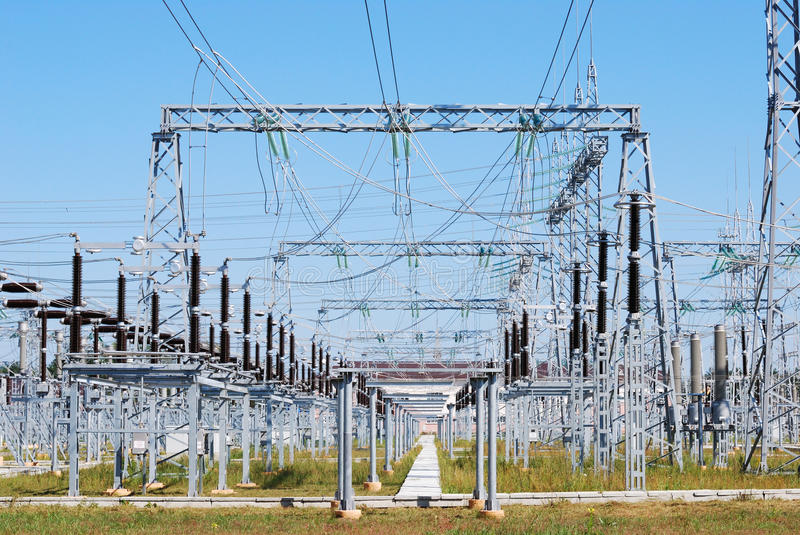A substation is a part of an electrical generation, transmission, and distribution system. Substations transform voltage from high to low, or the reverse, or perform any of several other important functions. Between the generating station and consumer, electric power may flow through several substations at different voltage levels.Substations may be owned and operated by an electrical utility, or may be owned by a large industrial or commercial customer. Generally substations are unattended, relying on SCADA for remote supervision and control.

Types of Substation


Transmission substation
connects two or more transmission lines.The simplest case is where all transmission lines have the same voltage. In such cases, substation contains high-voltage switches that allow lines to be connected or isolated for fault clearance or maintenance. A transmission station may have transformers to convert between two transmission voltages, voltage control/power factor correction devices such as capacitors, reactors or static VAR compensators and equipment such as phase shifting transformers to control power flow between two adjacent power systems.
Distribution substation
transfers power from the transmission system to the distribution system of an area. It is uneconomical to directly connect electricity consumers to the main transmission network, unless they use large amounts of power, so the distribution station reduces voltage to a level suitable for local distribution.


Collector substation
The collector substation can also provide power factor correction if it is needed, metering and control of the wind farm. In some special cases a collector substation can also contain an HVDC converter station.Collector substations also exist where multiple thermal or hydroelectric power plants of comparable output power are in proximity.
Converter substations
Substations may be associated with HVDC converter plants, traction current, or interconnected non-synchronous networks. These stations contain power electronic devices to change the frequency of current, or else convert from alternating to direct current or the reverse.


Switching substation
A switching substation is a substation without transformers and operating only at a single voltage level. Switching substations are sometimes used as collector and distribution stations.
Elements of a substation
Substations generally have switching, protection and control equipment, and transformers. In a large substation, circuit breakers are used to interrupt any short circuits or overload currents that may occur on the network. Smaller distribution stations may use recloser circuit breakers or fuses for protection of distribution circuits. Substations themselves do not usually have generators, although a power plantmay have a substation nearby. Other devices such as capacitors and voltage regulators may also be located at a substation.

© Copyright Gauri Electric Solutions 2021. All Rights reserved Website Designed By Nextwebi